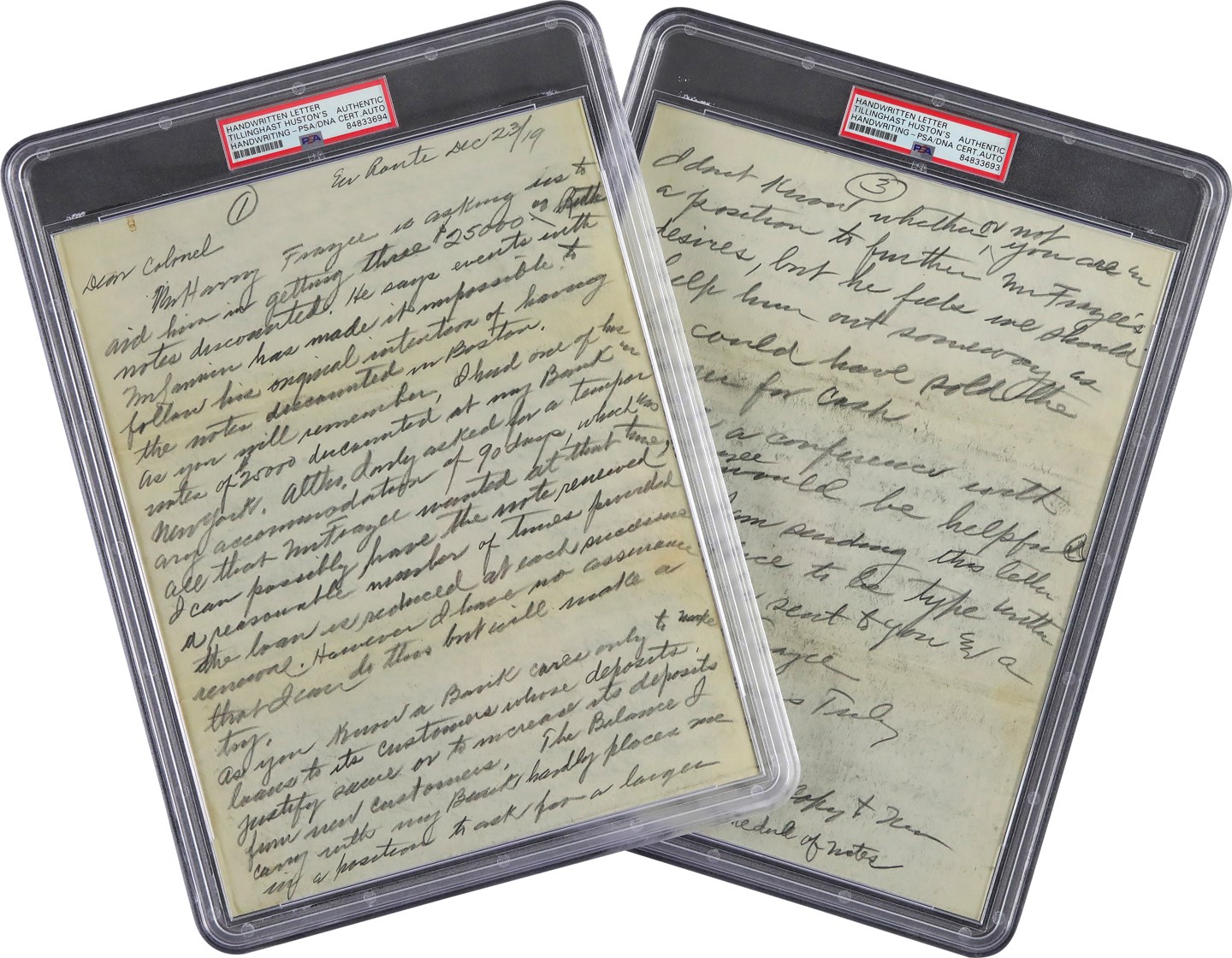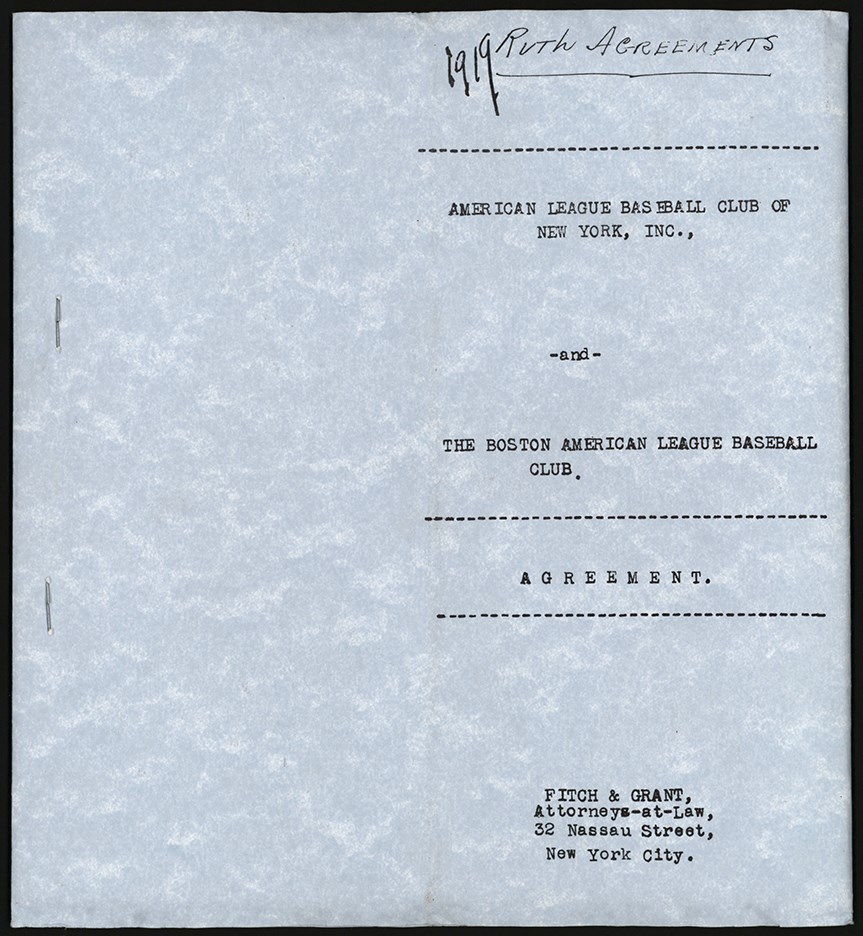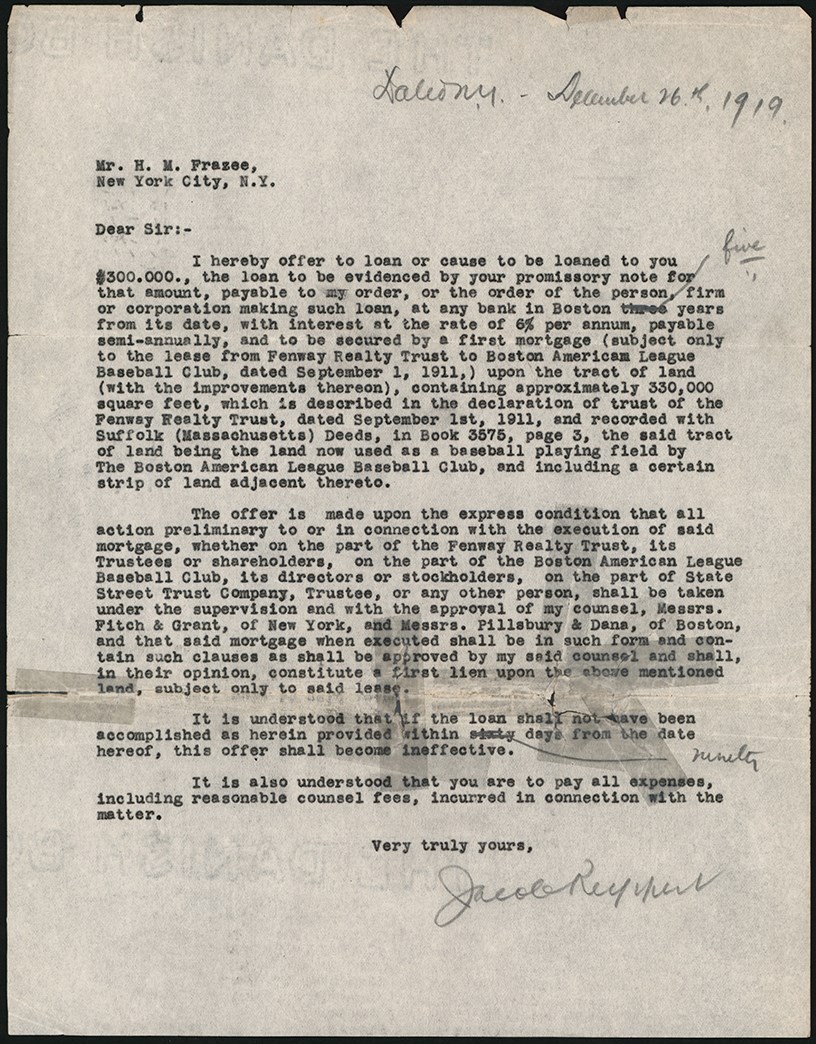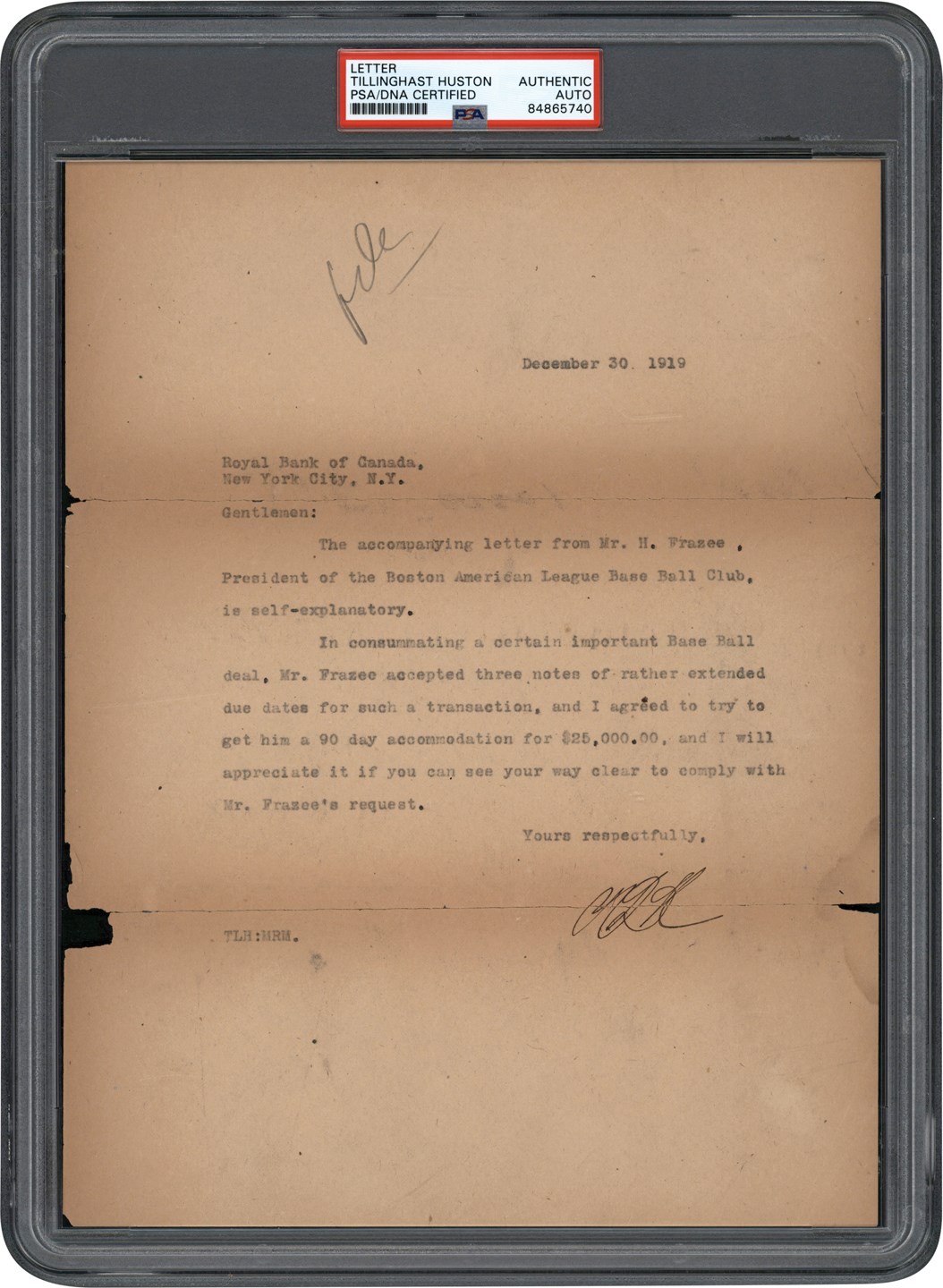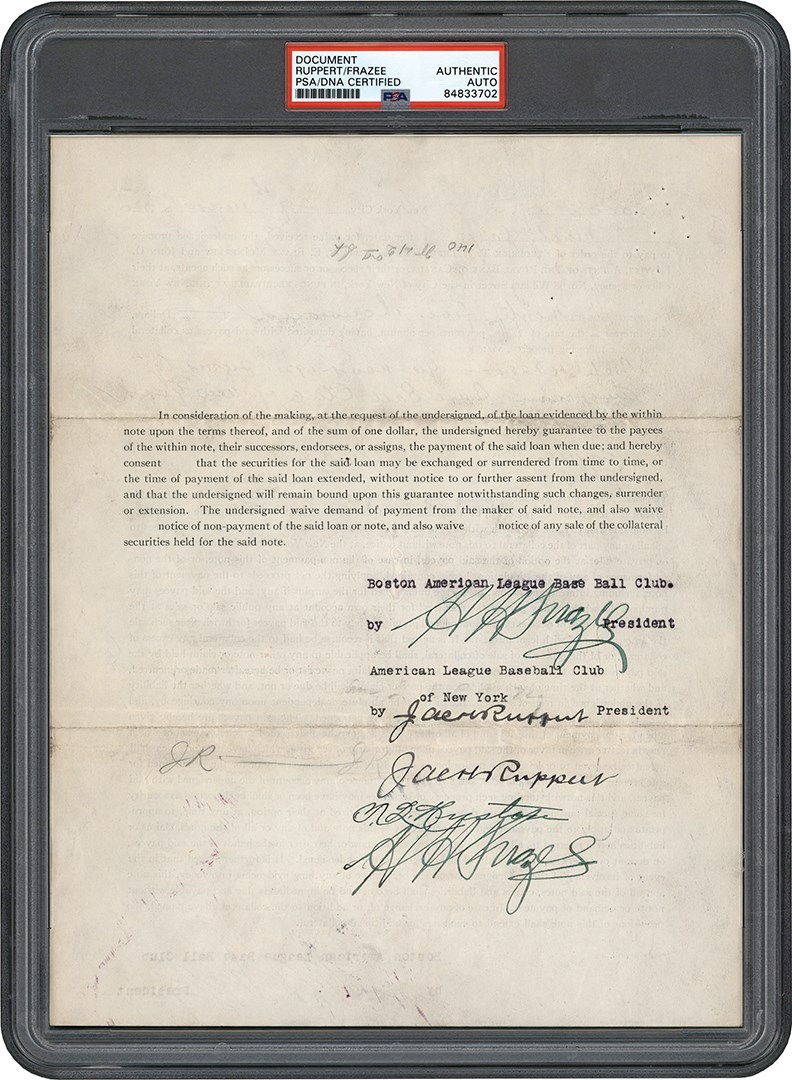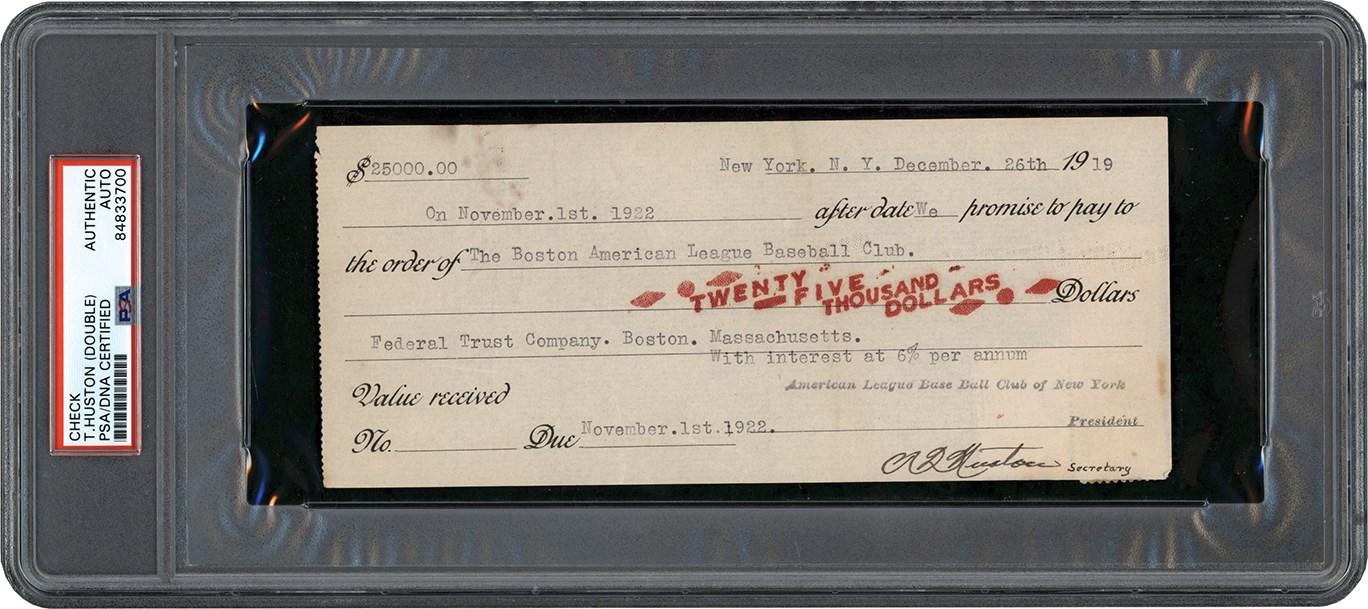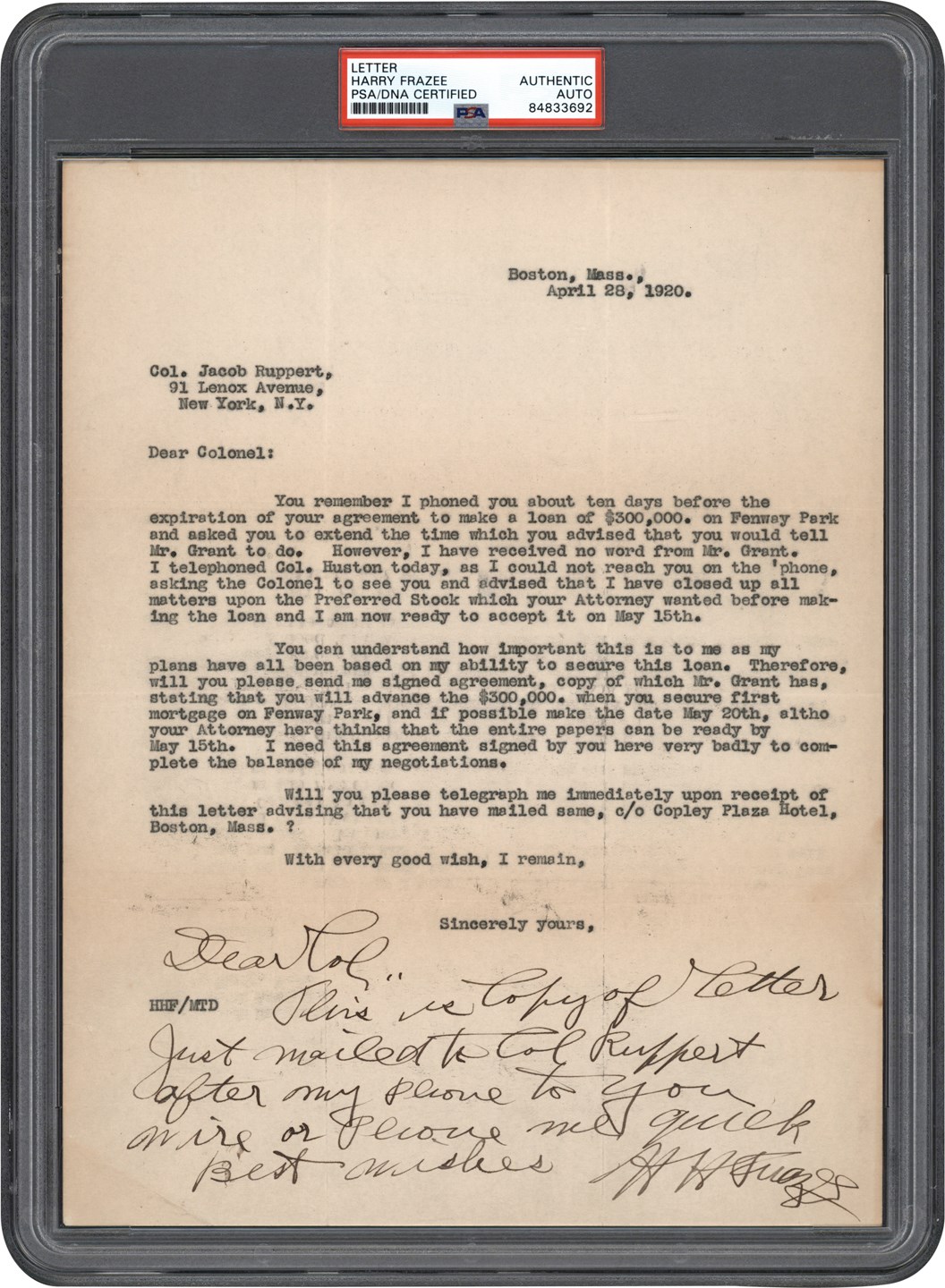Consign Your Best Items with Lelands. We Also Pay Cash on the Spot! Learn More Here.
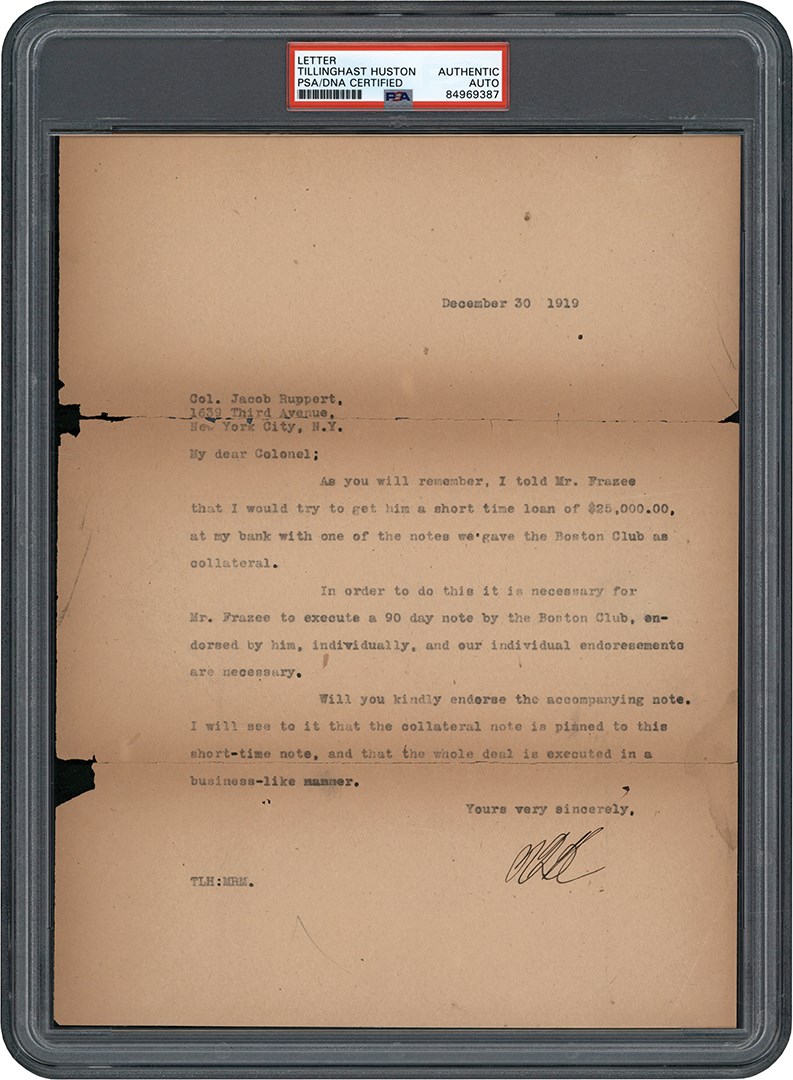
December 30th, 1919, Colonel Tillinghast Huston Signed Letter to Jacob Ruppert Asking Him to Sign Promissory Note Connected to The Sale of Babe Ruth (ex-Barry Halper Collection)
<p><span style="font-size: 10pt;">One-page typed letter, dated December 30, 1919, signed by T. L. Huston. PSA has encapsulated the letter and certified the signature as "Authentic." This letter has great historical significance because it directly relates to the Boston Red Sox' sale of Babe Ruth's contract to the New York Yankees just four days earlier. The Yankees purchased Ruth's contract for $100,000, with $25,000 paid in cash, and the balance in the form of three $25,000 promissory notes, due, respectively on November 1st in each of the three succeeding years (1929, 1921, and 1922). In his letter, Huston writes to his partner Jacob Ruppert (Huston and Ruppert purchased the Yankees in 1915) regarding the procurement of a loan at one of Huston's banks for Red Sox owner Harry Frazee. As collateral for the loan, Frazee was using one of the $25,000 promissory notes from the Yankees, and, as such, Frazee's note to the bank required the endorsements of both Ruppert and Frazee. Here, Huston is instructing Ruppert to endorse the enclosed note and assures him that he will see to it that the "whole deal is executed in a business-like manner." The copy letter (8.5x11") displays two completely torn horizontal folds which have been repaired with clear tape on the reverse, as well as several edge tears and paperclip impressions. </span></p><p><span style="font-size: 10pt;">The reason Harry Frazee sold Babe Ruth's contract to the Yankees on December 26, 1920, was because he was in desperate need of cash. He owed $262,000 on an outstanding note to former Boston Red Sox owner Joseph Lannin, from whom he purchased the club, he needed to contribute $100,000 in cash equity for a theater he was purchasing, and his most recent theatrical productions were in the red. Even after the sale of Ruth's contract to the Yankees for $100,000 and a $300,000 loan on December 26, 1919, Frazee was still strapped for cash.</span></p><p><span style="font-size: 10pt;">One of Frazee's problems centered around still unsettled issues with his original Fenway Park mortgage. Until that matter was settled he could not avail himself of the Yankees $300,000 loan (Fenway Park was listed as collateral for the loan). </span><span style="font-size: 10pt;">Also, the $100,000 that Frazee received from the Yankees was not in one lump sum. Frazee agreed to take $25,000 in cash, with the remainder to be paid in three notes of $25,000, each coming due, respectively, on November 1st over the next three years. The initial $25,000 that he received in cash, was not nearly sufficient to cover his debts. Faced with this mounting financial pressure, Frazee immediately began borrowing money, using the three Yankees notes as collateral for his loans. As this letter shows, the Yankees, and Huston in particular, with his bank connections, were instrumental in helping Frazee discount the three notes. </span></p><p><span style="font-size: 10pt;">This letter, along with nearly every other surviving document relating to the sale of Babe Ruth to the New York Yankees, originates from the estate of Ed Barrow, who was manager of the Boston Red Sox at the time of the transaction, and soon after became the longtime business manager/general manager of the New York Yankees. Many years after Barrow's death, legendary collector Barry Halper purchased Barrow's entire business archive from the Barrow family, which included dozens of documents relating to Boston's historic sale of Ruth. (Barry Halper's collection is considered by many to have been the finest private baseball-memorabilia collection ever assembled.) In 1999, Halper sold nearly his entire collection at auction through Sotheby's in New York (the collection was so vast that it took over a week of twice-daily live auctions and three months of weekly internet sales to liquidate it). Lot 560 in the live-auction portion of the sale featured a large collection of documents relating to the sale of Ruth, from which this letter as well as every other "sale of Ruth" document featured in this auction, originates. The entire content of Lot 560 in the 1999 Sotheby's Halper Collection auction has been consigned to our 2023 Spring and Summer Classic auctions by the original purchaser, making this just the third time since 1919 that these historically significant documents will have traded hands.</span></p>
Past Sports Card, Memorabilia, Non-Sports Card and Collecitble Auction Items
Other past auction items that may be of interest to you.

